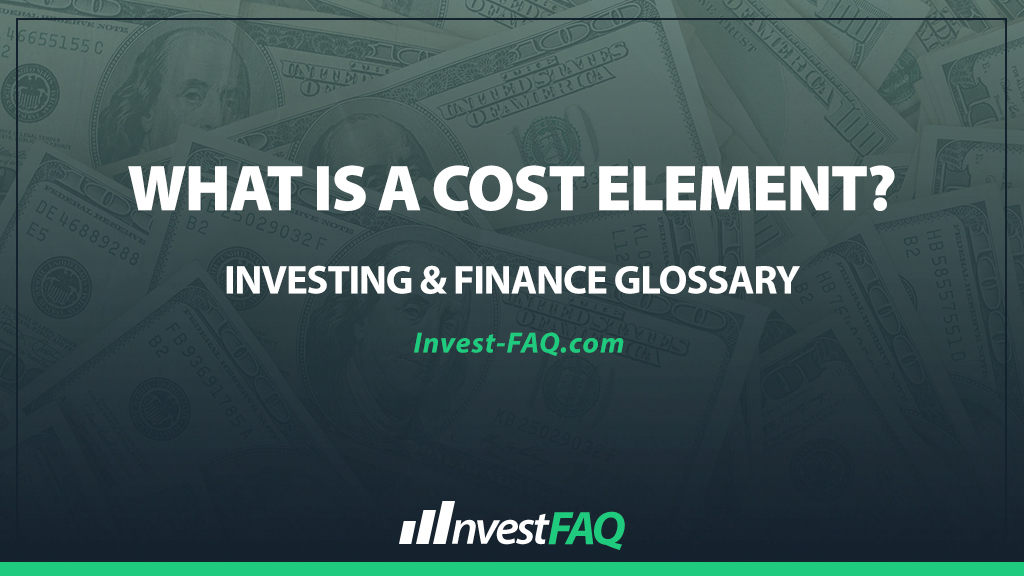
Cost Element
Contents
A cost element is a category or classification within an accounting system used to specify the type of cost incurred by a business. It serves as a foundational component in cost accounting, allowing for the detailed tracking, analysis, and reporting of costs.
In business, cost elements are utilized to organize and categorize costs, facilitating effective cost management and strategic decision-making.
They help in identifying where resources are being consumed and in what quantities, enabling businesses to pinpoint areas for cost reduction, budget adjustments, and efficiency improvements. Cost elements are critical in various costing methodologies, including job costing, process costing, and activity-based costing.
Example of a Cost Element
Consider “Manufacturing Solutions Inc.,” which produces electronic components. The company classifies its costs into various cost elements, such as raw materials, direct labor, and manufacturing overhead. For a specific job, the raw materials cost is $5,000, direct labor is $3,000, and manufacturing overhead is calculated as $2,000.
Each of these categories represents a separate cost element, allowing the company to track and analyze the total cost ($10,000) involved in the production job.
In this scenario, Manufacturing Solutions Inc. uses cost elements to allocate costs accurately to a production job. By breaking down the total cost into raw materials, direct labor, and manufacturing overhead, the company can assess the efficiency of its production processes and identify potential areas for cost savings.
For instance, if the direct labor cost is higher than industry standards, the company might look into training improvements or automation to increase efficiency. This level of detail in cost tracking underscores the value of cost elements in managing and optimizing business expenses.
Types and Uses in Business Scenarios
Cost elements are applied across a variety of business scenarios, including:
Budgeting and Forecasting: Assisting in the creation of detailed budgets and financial forecasts by categorizing expected costs.
Cost Control: Monitoring and controlling costs by analyzing expenditures within each cost element category.
Pricing Decisions: Informing pricing strategies based on the detailed breakdown of product or service costs.
Financial Reporting: Enhancing the accuracy and comprehensiveness of financial reports by providing detailed cost information.
These scenarios highlight the importance of cost elements in financial planning, cost management, and strategic business operations.
Significance for Investing & Finance
From an accounting perspective, cost elements are significant for several reasons:
Enhanced Cost Visibility: They provide clarity on where and how funds are being used, supporting detailed financial analysis.
Improved Cost Allocation: Cost elements enable more accurate allocation of costs to products, services, and projects, facilitating precise cost accounting and profitability analysis.
Strategic Decision Support: Detailed cost information supports informed strategic decisions regarding resource allocation, investment, and operational adjustments.
In summary, a cost element is a crucial accounting concept that categorizes costs for detailed tracking and analysis.
By enabling businesses to understand their cost structure more clearly, cost elements support effective cost management, informed decision-making, and strategic planning, ultimately contributing to enhanced financial performance and operational efficiency.
FAQ
How does a cost element differ from a cost center in accounting?
A cost element specifies the type of cost incurred, such as materials or labor, while a cost center relates to a location, department, or function within a business where costs are incurred, focusing on where expenses are accumulated rather than the nature of the expenses.
Can a single transaction be associated with multiple cost elements?
Yes, a single transaction can involve multiple cost elements, such as when purchasing equipment that requires an allocation of costs to both tangible assets and associated shipping or installation services.
What role do cost elements play in activity-based costing (ABC)?
In activity-based costing, cost elements are crucial for assigning costs to activities based on their consumption of resources, helping to more accurately determine the cost of products or services by linking expenses directly to outputs.
How are cost elements used in budgeting and forecasting processes?
Cost elements are used in budgeting and forecasting to categorize and predict future expenses, allowing organizations to plan financial resources more effectively by understanding the detailed composition of expected costs.
